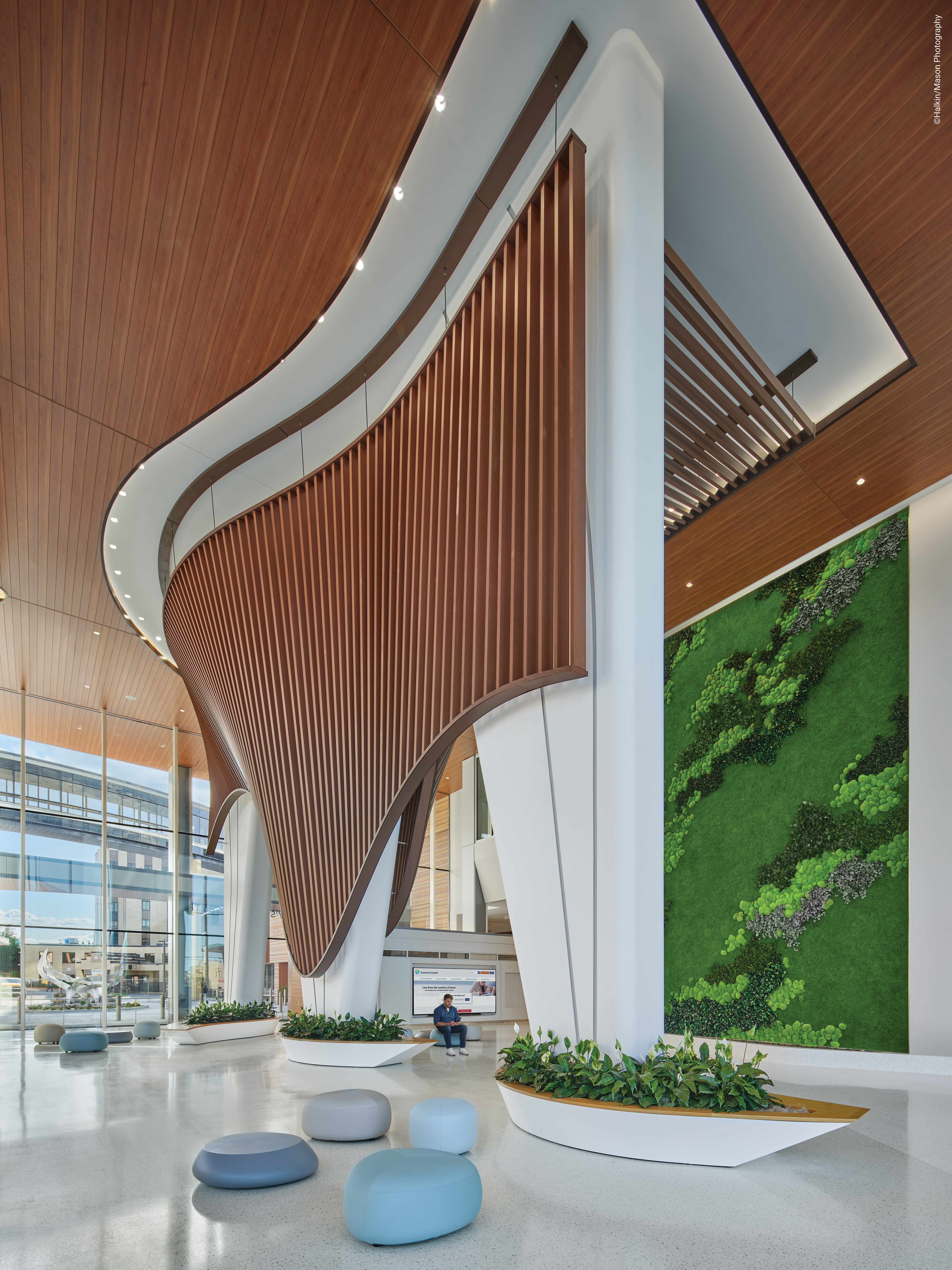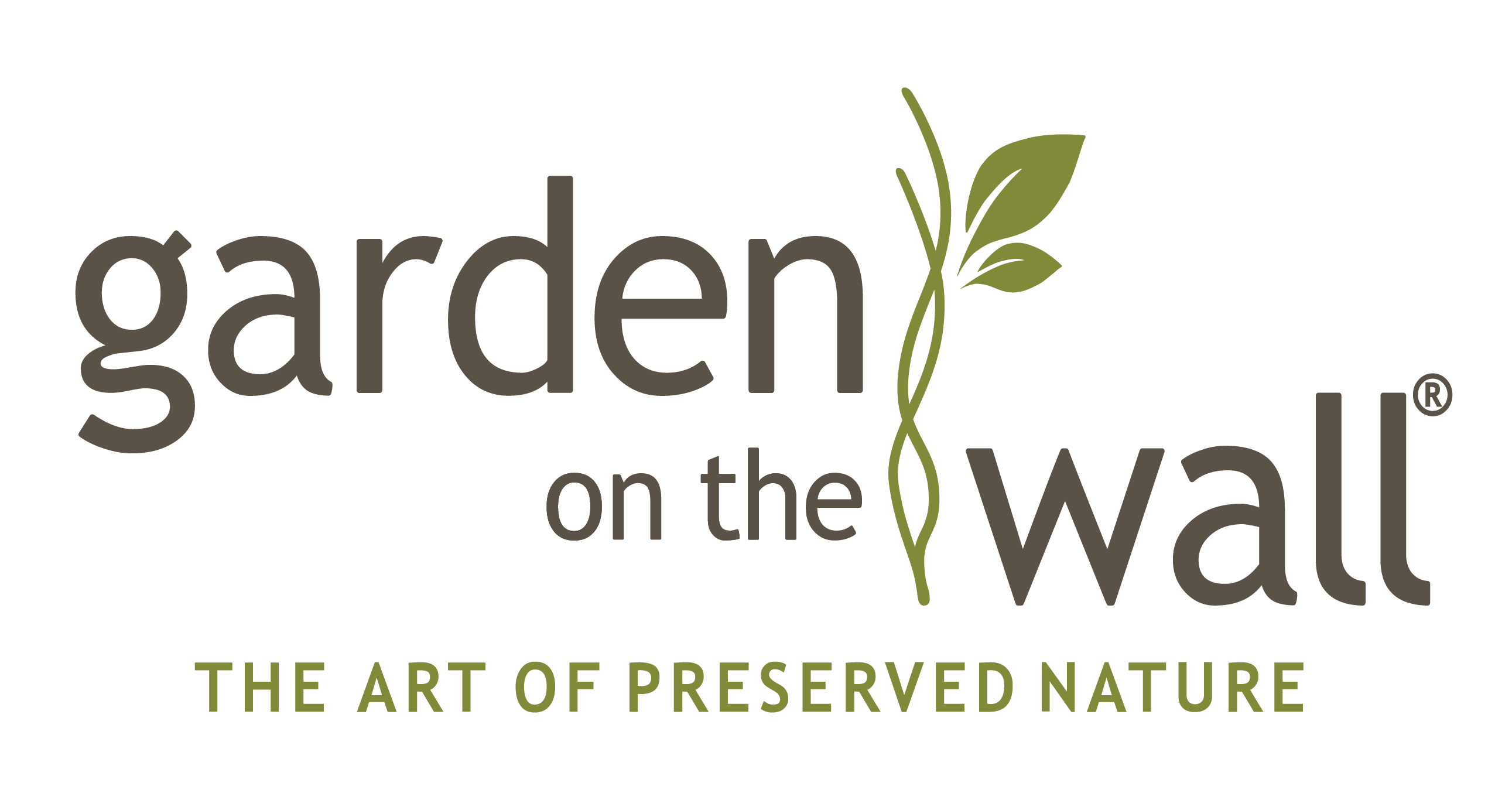Unveiling the Vital Role of Material Health in Preserved Gardens and Moss Walls: An Introductory Overview
Selecting installations with assurance using testing, credentials, and third-party, independent certification
Sponsored by Garden on the Wall® | By Amanda Voss, MPP
The power of preserved gardens to bolster sustainability and the occupant experience is demonstrable. Preserved gardens are a part of the biophilic design revolution, which not only has aesthetic and energy benefits for a structure, it also positively engages the whole person of the occupant. However, even biophilic elements can fall short if their materials do not support their health claims. To be certain of the quality of a selection, understanding third-party certifications that communicate product transparency, sustainable design, and safety is paramount.
When addressing IEQ (Indoor Environmental Quality), knowing with certainty what is in each product becomes crucial. Selecting and specifying preserved gardens with necessary third-party testing is the beginning of a process that can improve the comfort, health, and safety of occupants, and the interaction of building systems.
The most successful preserved gardens should also adhere to the highest visual standards. Learning visual quality assessment techniques equips the designer to assess the quality of materials and verify quality control while also helping them to set the expectations for the longevity of installed gardens. This course offers a thorough introduction to preserved gardens and their overall quality assessment as well as an analysis of the programs, organizations, and certifications that can assist in determining the right materials for the building, occupants, and activities.

Photo courtesy of Halkin/Mason Photography, LLC
Bringing nature indoors through preserved gardens not only captures the benefits of biophilia but through smart material choices, can bolster indoor environmental quality and support performance benchmarks. Preserved garden installation at Essentia Health Hospital in Duluth, Minnesota.
Garden on the Wall® is an award-winning provider of turn-key, Maintenance-free Garden Installations exclusively for interiors. Our gardens are created with All Natural Preserved Plants. Our mission is to elevate the spirits of occupants by bringing maintenance free nature-art installations to imaginative designed spaces; making these places better to live in and enjoy.
Originally published in Architectural Record
Originally published in April 2024
LEARNING OBJECTIVES
- Explain how plants are preserved, used, and displayed in indoor installations to incorporate biophilic design.
- Specify quality requirements to secure product transparency, sustainable design, longevity, and safety from preserved garden suppliers.
- Analyze the importance of using third-party testing and new material declarations, such as the Common Materials Framework, to enhance design decision-making, with a particular emphasis on health and wellness goals.
- Examine case studies that apply key certifications for preserved garden installations and discuss the benefits of these installations for occupant health in various settings.











